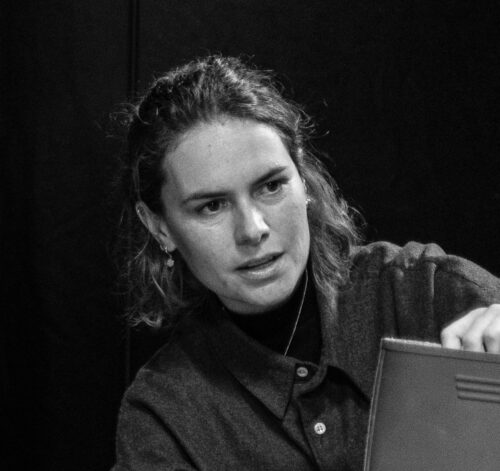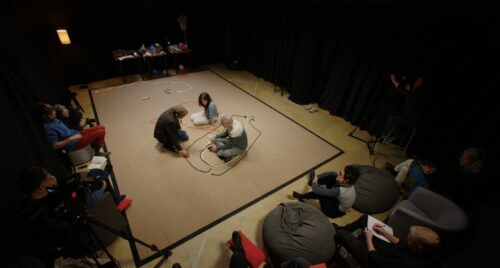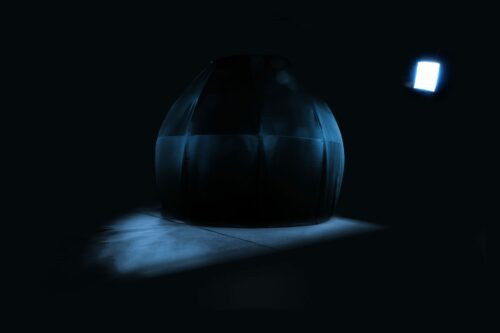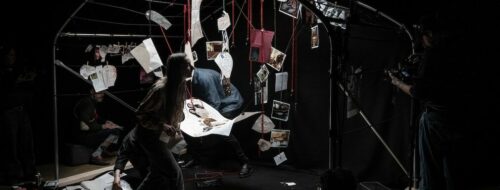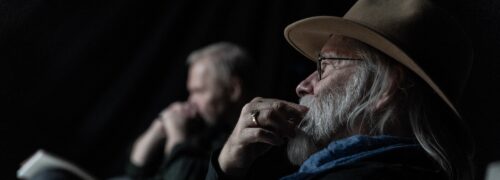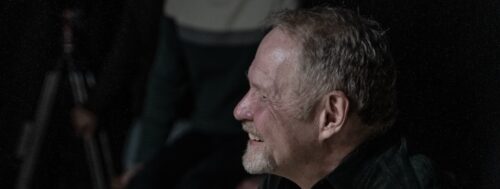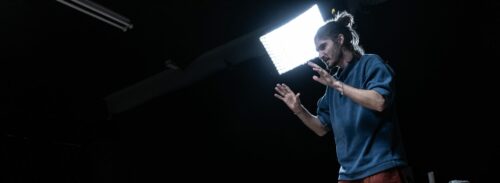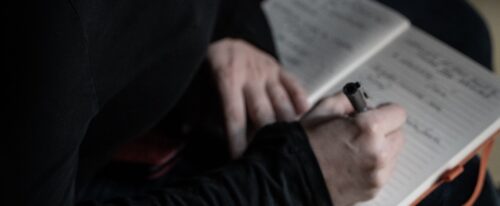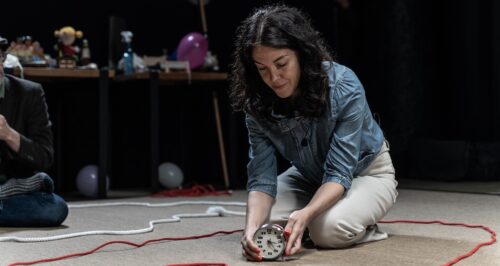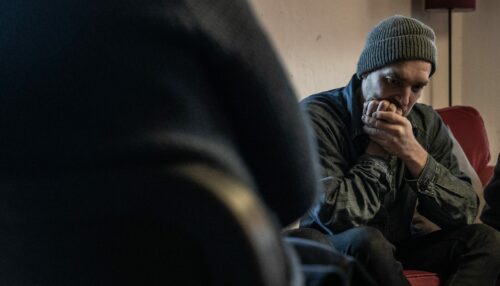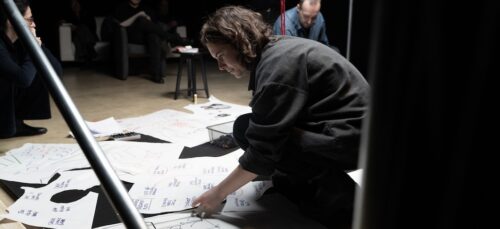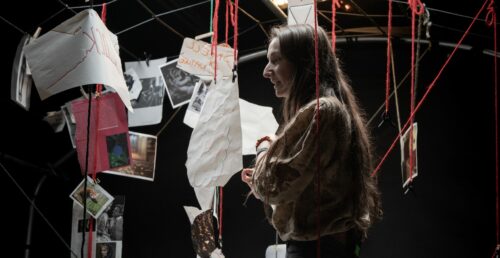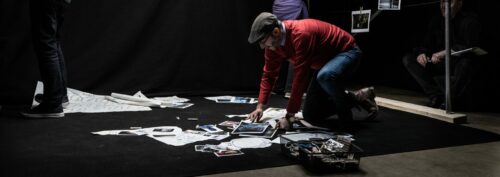Isla Badenoch
Isla Badenoch is a filmmaker and artist living in the rural borderlands of the UK and Ireland. She is interested in hidden communities and rites of passage connected to the natural environment. Her atmospheric films defy stereotypical understandings of those who have been excluded from society.
Isla’s work has led her to be selected as a Screen International Star of Tomorrow 2024, with films at numerous international OSCAR/ BAFTA-qualifying festivals, long- listed for a BIFA, broadcast on BBC4, Short of the Week, WaterBear and Minute Shorts.
Isla is in development of her debut narrative feature NOT DROWNING supported by BFI and Ffilm Cymru.
— As part of its 5th season, the StoryTANK team wanted to try a new experiment, under the guidance of six passionate and captivating researchers. The goal was to test and film the emergence of story ideas within experimental frameworks created by LA FABRIQUE DES MONDES — a unique initiative in Europe, developed at Le Groupe Ouest since 2023, under the auspices of the French Ministry of Culture.
The experience was offered to six screenwriters or filmmakers from six different European countries. Here, the StoryTANK provides an opportunity to explore and shed light on the creative process.
Below, a debrief by Isla Badenoch, as she reflects on her experience.
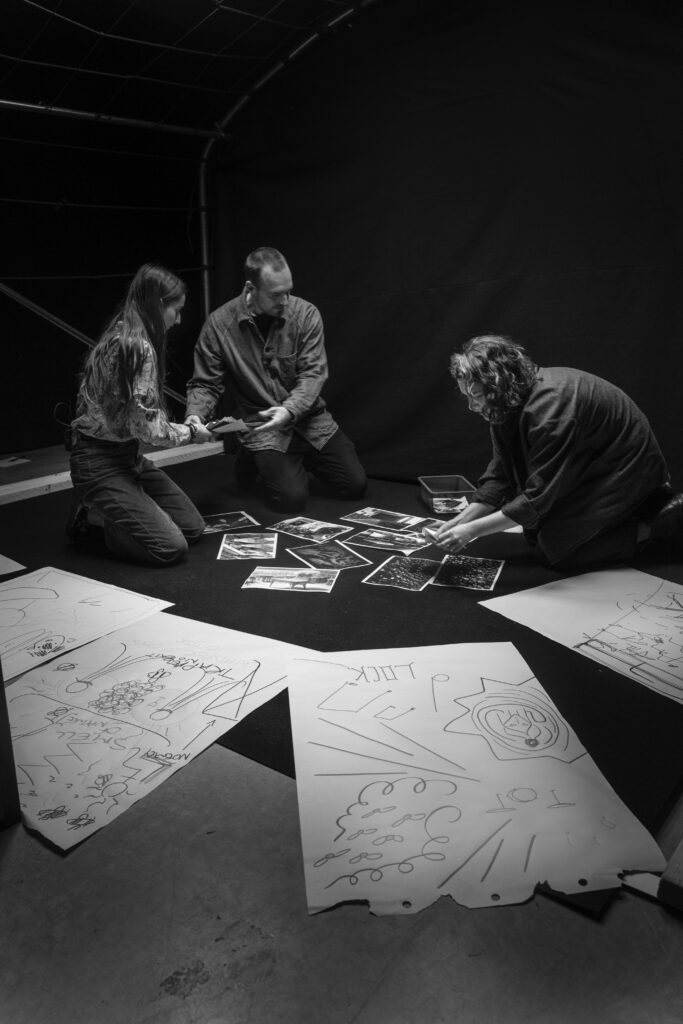
THE CAVE
FEELING THE NARRATIVE TO MAP IT
“In the Cave, we begin to make sense of chaos”
With the Cave, we’re suddenly off ered a small play space, almost a sandbox, with these small elements that we can use to invent stories: photographs generated by AI, from words we’ve generated ourselves, from a seed of an idea, and also magazine images, and it was as if we entered with chaos from multiple directions. And we begin to make sense of this chaos, arranging the collected elements and then, for some reason, ending up hanging them in the center. We manage to map the space. We wonder, then, what’s beneath the scene, who these people are, which opens up possibilities that we don’t have if we simply work around a table or with the help of a wall. We feel everything within this space.
THINKING PHYSICALLY ABOUT THE STORY
“Being able to physically walk around the story rather than seeing it in a linear, flat way helps enormously to move the narrative forward.”
In our story, there are wasps, and we hang them. It’s almost as if we can embody what it would be like to be in the audience of the concert hall where we’ve set the story, surrounded by wasps. is allows us to think about the behavior of the characters in the audience, what their behavior evokes about them: we move from an abstract idea to real characters with personalities and stories. Inside, we don’t pause to go back. Being able to physically walk around the story rather than seeing it in a linear, flat way helped enormously to move the narrative forward.
UNFOLDING THE NARRATIVE IN SPACE
“ The Cave allowed us all to have autonomy in co-creating the story”
I go into the Cave with two other writers, and none of the three of us really knows how we’re going to collaborate. ere’s no designated leader; there’s enough space for all of us. Each of us plays our part, experimenting with what would happen if we put this here, if we looked over there, and one of us suggests something that connects the dots. The Cave allows us autonomy in co-creating the story: which makes the experience rare because it’s unique. In the Cave, we try, together, to envision a truly shared idea, and having a three-dimensional space helps us do that.
THE BLACK ROOM
NARRATIVE AS EMOTIONAL TEXTURE
“In the Black Room, the characters’ feelings became a quest”
In the Black Room, unlike the Cave (which is very visual), the sole use of sound makes it entirely sensory. Sitting in a circle in the Black Room provokes a rather primitive physical sensation, as if we were sitting around an imaginary fire together. We lose our sense of self, unable to see anything, and we allow ourselves to be invaded solely by the sound: feeling it more than hearing it. It’s both terrifying and incredible, because suddenly, these sounds create an emotional texture, based on associations with the characters and the ideas germinated in the Cave. Suddenly, the Black Room allows for a heightened imagination. And the characters’ feelings become a quest: sadness and pain become intense, for example, and were not present in the Cave.
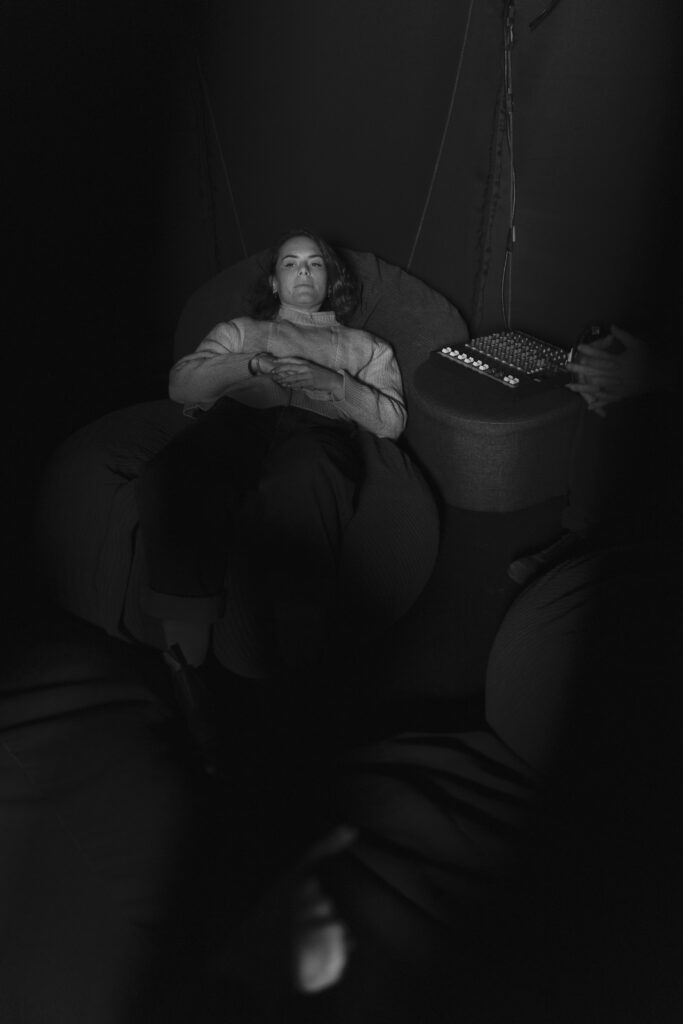
THE PLATEAU
PLAYING TO COMPOSE THE STORY, AS A COMMON THREAD
“With our own movements: we move with these objects and the characters come to life”
On the Plateau, we question the objects in relation to what we brought and assembled in the Cave and nurtured in the Black Room. The process of connection initiated in the Cave allows us to co-create, as a common thread. These objects help to make these characters more physical and to imagine more interactions with others. With our own movements: we move with these objects and the characters come to life. From the beginning of the Plateau to the end, we rediscover a rare sense of play, and thanks to everyone’s participation, there is no longer a single leader or author. We all co-create together, bringing a shared story to life.
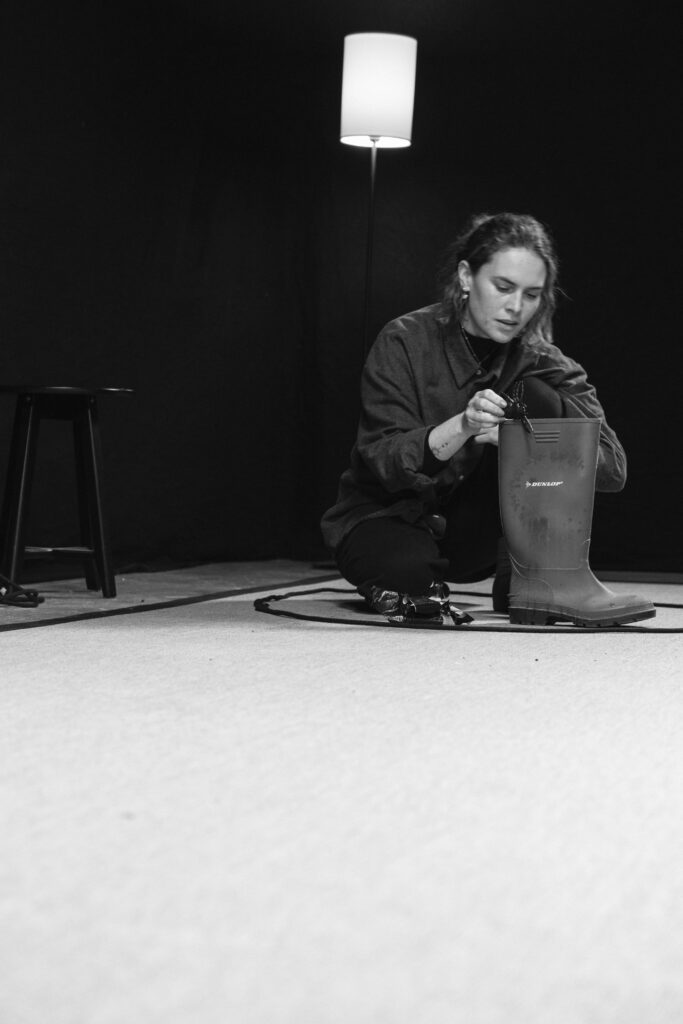
THE FACTORY OF WORLDS
STORYTELLING AS AN ARCHAEOLOGICAL DIG
“It’s almost as if the story is already there: all that’s needed is to be discovered.”
Troughout THE FACTORY OF WORLDS, we communicate beyond words, rather than trying to explain. is allows us to play diff erent roles in the story and experience it together. It’s almost as if the story is already there: all that’s needed is to be discovered! We explore it, externalize it through these images, sounds, and specific spaces.
EXPERIMENTING WITH STORYTELLING INDIVIDUALLY AND COLLECTIVELY
“I now want to imagine my stories in a three-dimensional way, by stepping outside the computer, using physicality, and moving through space.”
The sequence of devices in THE FACTORY OF WORLDS demonstrates what space can bring to the composition of a story. I now want to imagine my stories in a three-dimensional way, by stepping outside the computer, using physicality, and moving through space to either experience the story as a character or perceive aspects I might not have otherwise considered. Our brains want to solve, find answers, only if we are allowed to play, discover, and change our way of thinking.
